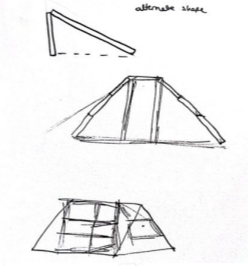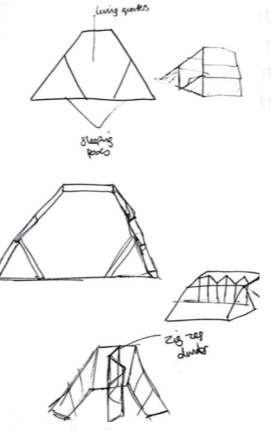Engineers Without Borders (EWB) x Alternus energy (ALT) - Studio+ Bureau project
Brief
In pairs we had to figure out how we might repurpose decommissioned solar PV panels so they can be reprocessed and reused in a scalable, repeatable process to create a useful product/service for communities in low income countries. In doing so we consulted and presented each idea and concept to EWB & ALT gaining helpful feedback as we designed to try and address each goal they had.
Research
The research phase was split between the entire PD class to help us gather information on a range of topics in such a short time we then had all this data gathered in one place to serve as inspiration for our connecting phase. My team focused on solar panel technology and construction while others covered topics like materials & construction, circularity, context of use and existing solutions.
Concepts
Once I analysed all of the groups research I had a lot of key insights to ideate from. Examining what problems the populations of Tanzania, Tamil Nadu and Malawi are experiencing as well as reiterating the issues with the current decommissioning and end of life process for solar panels; this helped narrow our focus on how we might use decommissioned solar panels to try solve problems related to housing, shelter & educational resources. With this came two strong concepts - Solar Desk and ShadeHut. While the solar desk would save panels that are still functioning from landfill and provide access to technology in rural classrooms, we decided to develop the ShadeHut.
Solar desk
Solar desk prototype
The ShadeHut was seen as having great potential as a modular post disaster shelter made from disused, non functioning, intact solar panels. I designed this shelter based off of pre existing, trusted structures such as geodesic domes and the Da Vinci bridge. Based off some research around anthropology and height demographics of men and women in Tanzania, Tamil Nadu and Malawi, we designed for the highest percentile of the population so that this shelter will be tall enough to support anyone & everyone who uses it. Furthermore, due to the modularity of this structure, we could build multiples of these and line them together to increase the size and coverage of the shelter.
ShadeHut
Back of solar panel
Development
I experimented with a variety of shapes and possible connecting structures that could help keep the panels together, ensure the entire structure was strong and sturdily freestanding such as potentially digging into the ground and cementing the bottom panel structures in place and having stainless steel hinges/joints at the edges of each solar panel drilled into place.





Outcome
We made multiple iterations of this shade hut concept before developing our solution as we wanted a structure that would be tall enough & stable enough to support the communities that would be using it while also keeping our shelter modular and easy to construct out of disused, non functioning, intact solar panels The steel frames add support to the solar panels when placed at an appropriate angle - one where it can still stand securely and be tall enough for habitation (and are further secured using nuts & bolts). Keeping materials and construction at a minimum means anyone can assemble the emergency shelter quick enough without many tools or skills.
Materials
Assembly
Reflection
I enjoyed working on the EWB x Alternus energy project, I was nervous yet excited going into it as my first ‘real world’ project and while I found some elements of the project challenging - such as designing around a product I was initially not entirely familiar with, I liked the challenge of diving deeper into the research and science behind solar panels and their potential various uses. Furthermore, having to take full charge of the project at times and encourage my team mate to continue contributing equally and sticking to deadline helped me learn how to adapt efficiently to a paired project dynamic.
I was also honoured to win under the 'special mention' prize category of the Alternus Sustainable Arts Initiative for this project.
